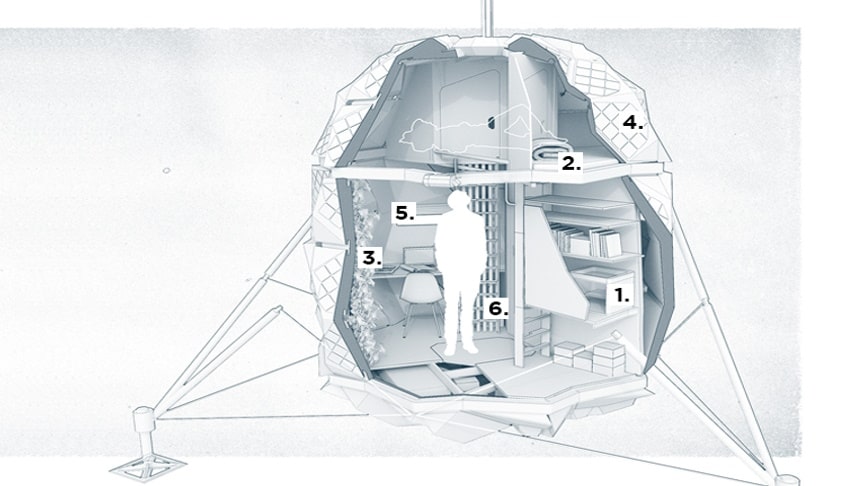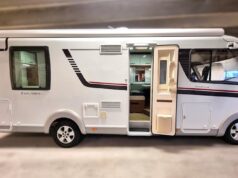SAGA, a Danish design studio designed and built the innovative LUNARK Habitat and tested its viability in Artic Greenland in 2002. This bare location was chosen for its similarities with the Moon, and the project is intended to make space liveable for future travellers. Discover how Armacell supported this project with our insulation solutions.
source/image: Armacell
LUNARK is a solar-powered habitat that could help humans to survive and thrive on the Moon. Its foldable structure combines Japanese origami with modern biomimicry design.In order to save space during transport and maximize space for the astronauts, the habitat is deployable. It features a closed origami shell comprised of rigid carbon fiber panels. The design has been algorithmically optimized resulting in a measured expansion of 750%.
source/image: Armacell
A black glossy shell made of carbon fiber makes out the main exterior of the habitat. The carbon fiber structure is sandwich panels with a foam core for extra insulation. Carbon fiber is ideal because it’s lightweight – which is crucial for transport and unfolding – yet strong. The panels are connected by a white foldable composite rubber. The main load bearing structure is an aluminium frame.
Advertisement
Batteries, water tank, storage: Utilization of vertical space is crucial when you do not have much to work with.Algae-based life support system: To help with the human longing for nature, an algae reactor brings life into a sterile environment and helps the psychological well-being of crew members with calming, bubbling sounds. The algae can even be harvested as a fresh and healthy source of nutrition to break up an otherwise bland selection of meals.
For the Moon the habitat needs to fit within a rocket, but for the LUNARK mission it needed to fit within a shipping container and sustain the 5,500 km long ship journey to northern Greenland. A shipping container is significantly smaller than a rocket, measuring only 2.35m wide and 2.39m tall.












